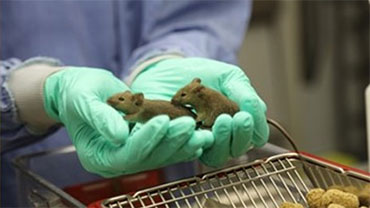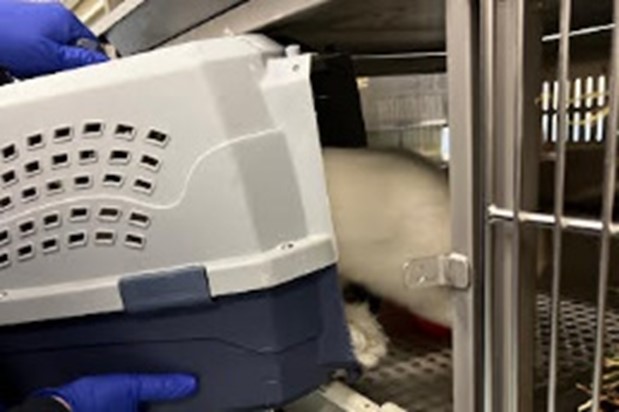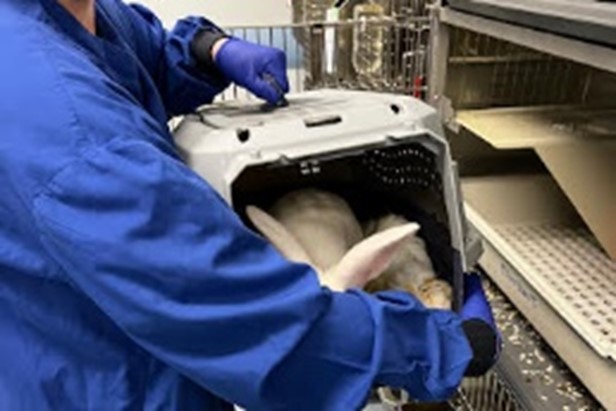Research Involving Animals – Division of Biomedical Services
Examples of the 3Rs

Refinement
Tunnel handling
We have taken on the refined methods relating to how to pick up a mouse following a study led by Professor Jane Hurst at the University of Liverpool.
This method is now successfully used by our technical staff and researchers at the University of Leicester and we are proud to show how this method is carried out within our facility (see below video).
Rabbit box training
Studies in pet rabbits have shown that during the act of picking up and handling, rabbits show signs of struggling and aggression due to fear. To refine the handling of our rabbits, and alleviate this stress, one of our technicians developed an idea to use a pet carrier to carry the rabbits to and from their home cage for health checks, weighing, or to visit the rabbit playpen (see above). The rabbits were also taught to move into the pet carrier of their own volition, which they learned very quickly, and was reinforced by the use of scenting from other rabbits in the room. This has now become the standard way of transporting rabbits in our rabbit room, and is a grat demonstration of refinement practice. This refined handling technique parallels the mouse tunnel handling technique described above.
The rabbit being presented with the pet carrier. The rabbit is showing a clear interest and is sniffing the carrier.

After checking the pet carrier the rabbit is hopping into the carrier of its own volition.

Now safely situated in the pet carrier, the rabbit is easily moved around the rabbit room.

Skin swabbing
A study into quantifying the potential of skin swabbing for DNA sampling of laboratory fish has been funded by the NC3Rs which, if proven, will help to refine the current process where DNA is collected via fin clipping.
Replacement
Pig spleens
A study led by researchers from University of Leicester and Leicester’s Hospitals provides useful information for improving our understanding of infections such as pneumonia and sepsis by replacing the use of protected animals in research with abattoir-sourced pig spleens.
Neurofunctional studies of vertebrate dopamine signalling
Neurons of the mesodopamine system regulate voluntary motor behaviour and reward prediction, and are severely disrupted in disorders such as Schizophrenia and Parkinson's disease. Data derived from this project will improve understanding of zebrafish dopamine circuits and will be used as a framework for developing ethically superior models of dopamine diseases.
Neurodegeneration studies in the fruit fly
Invertebrate models such as the fruit fly play a significant role in replacing, refining and reducing the emphasis on mice, and have provided considerable molecular insight into these diseases. Learn more about the study led by researchers at the University of Leicester.